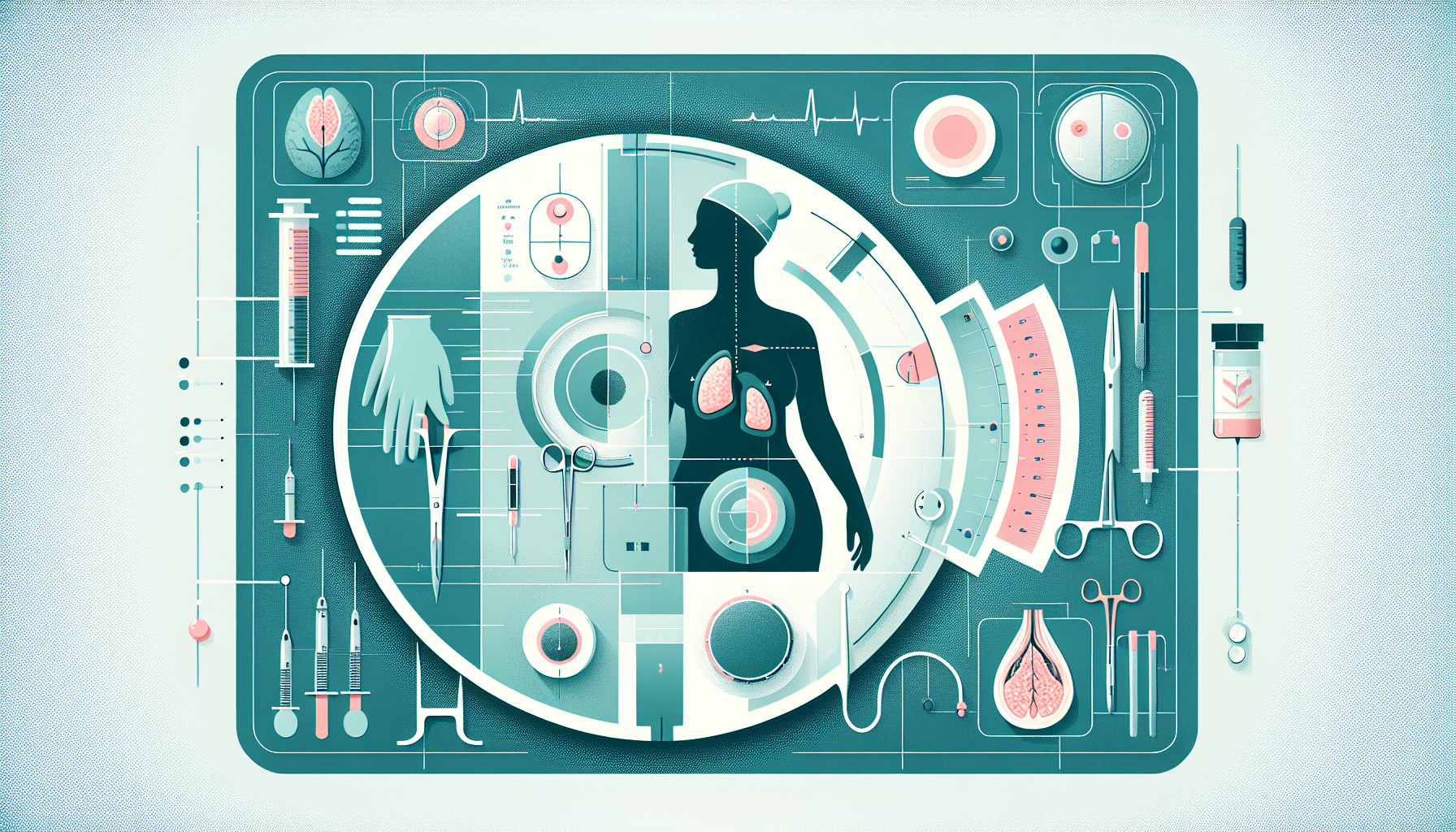Our Summary
This study aimed to compare the experiences of women who had different types of breast reconstruction following a mastectomy (surgery to remove a breast, usually due to cancer). The two types of reconstruction examined were immediate implant-based breast reconstruction (IBBR) after either a nipple-sparing mastectomy (NSM, where the nipple is left intact) or a simple mastectomy with subsequent nipple reconstruction (SNR, where the nipple is removed and then later reconstructed).
The researchers wanted to see if there were differences in patient-reported outcomes (PROs), such as satisfaction and quality of life, between the two types of reconstruction. They also wanted to see if there were differences in complication rates.
The study analysed data from a larger study on mastectomy outcomes that recruited patients between 2012 and 2015. Of the 600 women in the study, just under half had received NSM.
The results showed that, irrespective of mastectomy type, there were no significant differences in satisfaction with the breasts, psychosocial well-being, physical well-being, or sexual well-being. There were also no significant differences in complication rates or failures of the reconstruction.
Therefore, even though NSM has been reported to provide better aesthetic outcomes, this study found no significant differences in satisfaction, quality of life, or complications between NSM and SNR at two years after the reconstruction.
FAQs
- What are the two types of breast reconstruction examined in the study?
- According to the study, are there any significant differences in patient satisfaction and quality of life between the two types of reconstruction?
- Was there any significant difference in complication rates or failures of reconstruction between the nipple-sparing mastectomy and simple mastectomy with subsequent nipple reconstruction?
Doctor’s Tip
One helpful tip a doctor might give a patient about mastectomy is to carefully consider the type of breast reconstruction they choose, as both immediate implant-based breast reconstruction (IBBR) after a nipple-sparing mastectomy (NSM) and simple mastectomy with subsequent nipple reconstruction (SNR) have similar outcomes in terms of satisfaction, quality of life, and complication rates. It is important for patients to discuss their options with their healthcare team and choose the reconstruction method that best fits their individual needs and preferences.
Suitable For
Patients who are typically recommended mastectomy include those with breast cancer, a strong family history of breast cancer, a genetic predisposition to breast cancer (such as BRCA mutations), or a history of previous radiation therapy to the breast. Other reasons for mastectomy may include the presence of a large or aggressive tumor that cannot be effectively treated with other methods, as well as individuals who have already undergone multiple lumpectomies or have a high risk of recurrence. Ultimately, the decision to undergo a mastectomy is a personal one that should be made in consultation with a healthcare provider.
Timeline
Before the mastectomy:
- Patient is diagnosed with breast cancer or other condition that requires a mastectomy.
- Patient meets with healthcare providers to discuss treatment options, including the possibility of breast reconstruction.
- Patient undergoes pre-operative testing and preparation for surgery.
- Patient may undergo chemotherapy or radiation therapy prior to the mastectomy.
After the mastectomy:
- Patient undergoes the mastectomy surgery.
- Patient may experience pain, swelling, and discomfort in the chest area.
- Patient may stay in the hospital for a few days for monitoring and recovery.
- Patient begins the process of breast reconstruction, either immediately after the mastectomy or at a later time.
- Patient may undergo additional surgeries for nipple reconstruction or other adjustments to the reconstructed breast.
- Patient may experience emotional and psychological challenges related to body image and self-esteem.
- Patient attends follow-up appointments with healthcare providers to monitor healing and address any complications.
- Patient may undergo physical therapy or other treatments to improve range of motion and strength in the chest area.
- Patient continues to adjust to life after the mastectomy, including adapting to changes in clothing, physical activities, and intimate relationships.
What to Ask Your Doctor
Some questions a patient should ask their doctor about mastectomy and breast reconstruction options include:
- What are the different types of mastectomy procedures available, and which one would be most suitable for my case?
- What are the potential risks and complications associated with the mastectomy procedure?
- What are the different types of breast reconstruction options available after mastectomy, and what are the pros and cons of each?
- What is the typical recovery process like after mastectomy and breast reconstruction surgery?
- How soon after mastectomy can breast reconstruction be performed, and is immediate reconstruction an option for me?
- What are the potential long-term effects of different types of breast reconstruction on my physical and emotional well-being?
- Are there any specific factors (such as age, overall health, or breast size) that may impact the choice of breast reconstruction option?
- How many procedures are typically required for complete breast reconstruction, and what is the timeline for each stage of the process?
- What are the expected outcomes in terms of appearance, sensation, and functionality after breast reconstruction surgery?
- Are there any support resources or counseling services available to help me cope with the emotional aspects of mastectomy and breast reconstruction?
Reference
Authors: Santosa KB, Qi J, Kim HM, Hamill JB, Pusic AL, Chun YS, Wilkins EG, Kozlow JH. Journal: Ann Surg. 2021 Aug 1;274(2):390-395. doi: 10.1097/SLA.0000000000003577. PMID: 31469747
